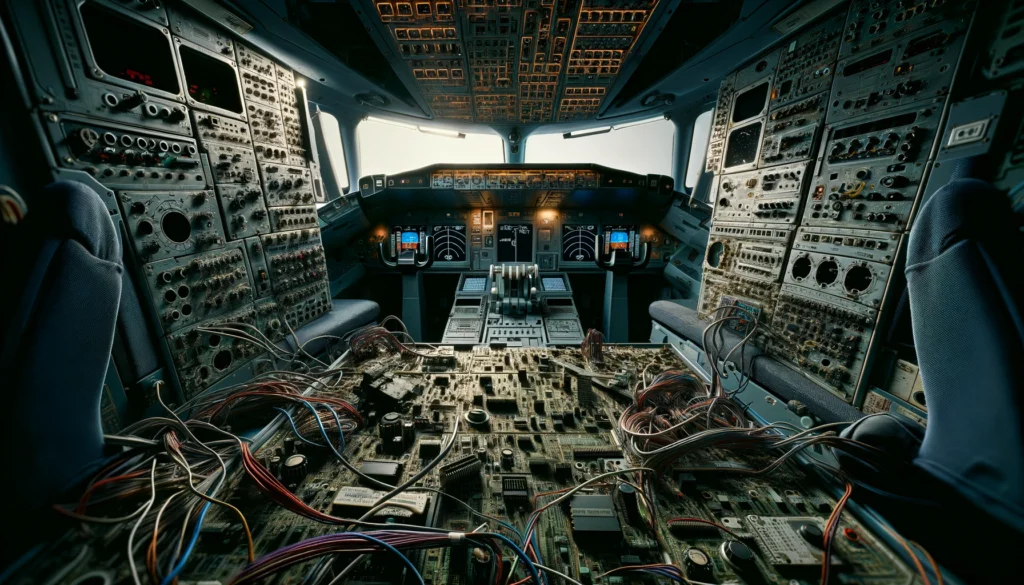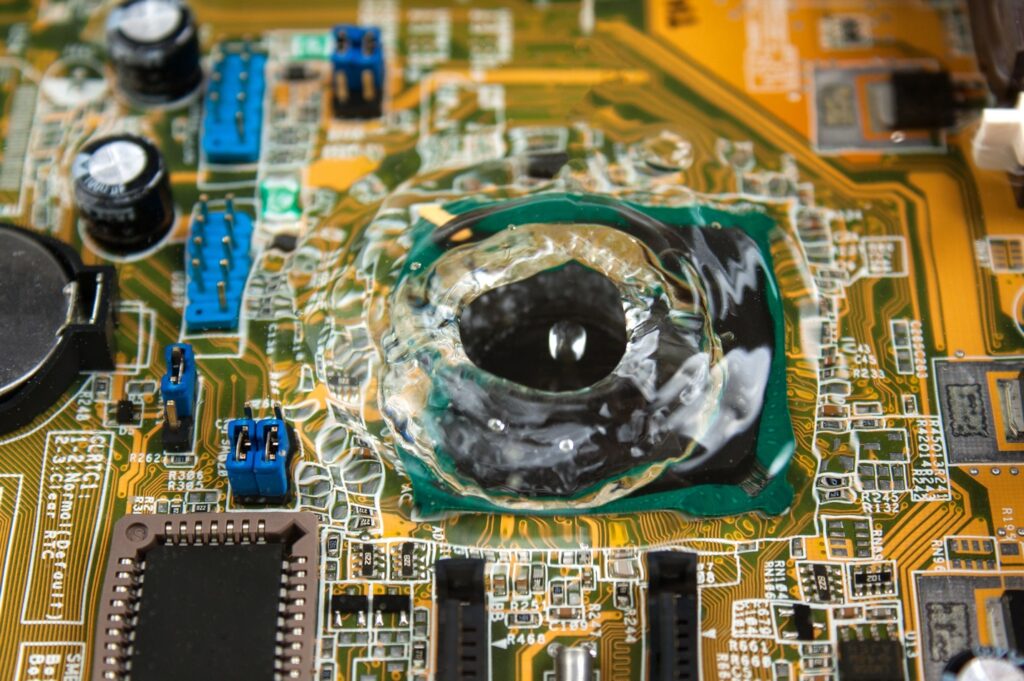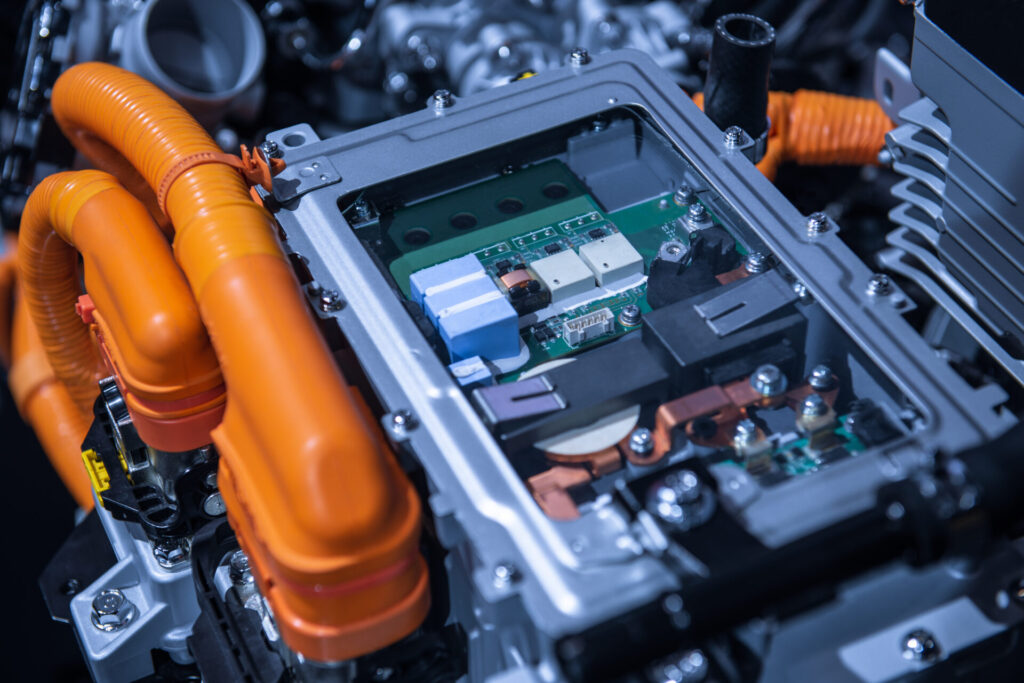Elevate your design and manufacturing processes with Autodesk Fusion
In the aerospace and automotive industries, stringent standards govern PCB design. These critical components endure extreme environments, ensuring safety and reliability in electronic systems. Read on to learn more about these requirements and how Autodesk Fusion can help.

In the aerospace and automotive industries, where uncompromising safety and reliability are paramount, the design and manufacturing of printed circuit boards (PCBs) must adhere to stringent standards. These critical components, which form the backbone of numerous electronic systems, must withstand the harshest environments imaginable, from the scorching heat of desert conditions to the bone-chilling temperatures of the upper atmosphere.
Rigorous Requirements for Aerospace PCBs
The aerospace sector imposes strict guidelines on its suppliers, and rightly so, given the high stakes involved. Every component, including PCBs, must undergo rigorous testing and certification processes to ensure flawless performance under extreme conditions. Compliance with standards such as AS9100, which builds upon the ISO 9000 quality management system, is a prerequisite for suppliers in this industry.
Adhering to AS9100 Standards

Established in 1999 by the Society of Automotive Engineers and the European Association of Aerospace Industries, AS9100 encompasses the ISO 9000 standards. It adds a layer of additional requirements explicitly tailored for the aerospace industry. These include:
- Operations Risk Management: Identifying and mitigating potential risks throughout the product lifecycle.
- Product Safety: Ensuring the safety of the final product through robust design and testing processes.
- Special Requirements: Addressing unique requirements specific to the aerospace industry.
- Critical Items: Implementing stringent controls for components vital to the system’s functionality and safety.
- Configuration Management: Maintaining traceability and control over product configurations and changes.
- On-Time Delivery: Prioritizing timely delivery to avoid disruptions in the supply chain.
- Counterfeit Parts: Implementing measures to prevent counterfeit or non-conforming parts.
- Expanded Requirements for Production and Sub-suppliers: Extending quality and compliance requirements to all levels of the supply chain.
Adherence to AS9100 standards ensures the highest levels of quality and safety and improves efficiency throughout the supply chain by promoting regulatory compliance, quality assurance, and risk mitigation.
Designing for Longevity and Zero Failure
In the aerospace domain, the primary objective is to build reliable products capable of withstanding the test of time. Customers expect their electronics to function flawlessly for 15 to 20 years, with zero tolerance for failure. This stringent requirement necessitates a design approach prioritizing longevity and reliability from the outset.
Designers must carefully select proven, reliable technologies and avoid bleeding-edge solutions that may introduce unnecessary risks. Robust thermal management strategies, such as employing heavy copper designs, incorporating thermal vias, and leveraging chassis for heat dissipation, are essential for ensuring optimal performance in the harsh environments encountered in space.
Materials and Coatings for Harsh Environments

The choice of materials and coatings plays a crucial role in the durability and reliability of aerospace PCBs. Polyimide, a high-performance polymer, is the material of choice for most applications, particularly those involving geostationary satellites with extended lifespans. However, alternative materials from manufacturers like Rogers are gaining traction for lower-orbit satellites with shorter operational lifetimes.
Conformal coatings, applied to the assembled PCB, provide additional protection against environmental factors such as moisture, humidity, and dust. Careful selection and testing of compatible solder masks and conformal coating combinations ensure optimal adhesion and functionality.
Rigorous Testing and Documentation
The aerospace industry demands extensive testing and documentation to validate the reliability and performance of PCBs under various conditions. Customers may require vacuum chamber testing, temperature cycling, and simulations of zero-gravity environments to mimic the harsh realities of space.
Compliance with industry standards like IPC 6012DS, an enhanced version of IPC Class 3, is often mandatory. These standards outline stringent requirements for release criteria, quality control, minimum plating thicknesses, and more. Comprehensive documentation, including micro-section analysis, First Article Inspection Reports (FAIRs), and detailed process control data, is essential for demonstrating adherence to customer specifications.
Stringent Requirements for Automotive PCBs

While the stakes may differ, the automotive industry also imposes rigorous standards on PCBs to ensure the safety and reliability of vehicles on the road. Extreme temperature variations, vibrations, and electromagnetic interference are just a few challenges automotive PCBs must overcome.
Thermal Management and Material Selection

Effective thermal management is crucial for automotive PCBs, as they must operate flawlessly under a wide range of temperatures, from the scorching heat of desert climates to the freezing conditions of Arctic regions. Designers often employ heavy copper designs, similar to those used in the aerospace industry, to facilitate heat dissipation.
Material selection is equally important, with high-performance polymers like polyimide and specialized materials from manufacturers like Rogers being popular choices. These materials
offer excellent thermal and mechanical properties, ensuring long-term reliability in demanding automotive applications.
Environmental Protection and Reliability
Automotive PCBs are exposed to various environmental factors, including moisture, dust, and contaminants. To protect against these threats, conformal coatings are commonly applied to the assembled PCBs, providing a barrier against the elements and ensuring reliable operation.
Redundancy is another critical aspect of automotive PCB design. It mitigates the risk of system failure due to component malfunction or environmental factors. Multiple backup systems, sourced from suppliers to avoid common defects, are often implemented to ensure uninterrupted operation in critical situations.
Stringent Testing and Certification

Like the aerospace industry, the automotive sector demands rigorous testing and certification processes to validate the performance and reliability of PCBs. Environmental testing, such as temperature cycling, vibration testing, and electromagnetic interference (EMI) testing, is essential to ensure that the PCBs can withstand the harsh conditions encountered on the road.
Compliance with industry standards, such as those set by the International Organization for Standardization (ISO) and the Automotive Electronics Council (AEC), is mandatory. These standards outline specific requirements for design, manufacturing, and testing processes, ensuring consistent quality and performance across the industry.
Partnering with Experienced Suppliers

Given the stringent requirements and complex design considerations in engineering PCBs for aerospace and automotive applications, partnering with experienced and certified suppliers is crucial. These suppliers possess the necessary expertise, state-of-the-art facilities, and rigorous quality control processes to deliver PCBs that meet or exceed industry standards.
Experienced suppliers can provide invaluable guidance and support throughout the design and manufacturing process, offering insights into material selection, thermal management strategies, and compliance with relevant regulations. They can also assist with comprehensive testing, documentation, and certification processes, ensuring the final product meets all requirements for safe and reliable operation in harsh environments.
The demand for high-performance, reliable PCBs continues to grow in the ever-evolving landscape of aerospace and automotive technologies. By adhering to stringent industry standards, implementing robust design practices, and partnering with experienced suppliers, manufacturers can deliver PCBs that withstand the harshest environments and contribute to the safety and reliability of critical systems.
As the aerospace and automotive industries push innovation boundaries, PCBs’ role will become even more crucial. By embracing cutting-edge technologies and adhering to rigorous quality standards, manufacturers can pave the way for a future where safety, reliability, and performance are seamlessly integrated into every electronic system, no matter how harsh the environment.
Autodesk Fusion – A solution for aerospace and automotive PCB design

The right tools can mean the difference between innovation and obsolescence in the high-stakes aerospace and automotive engineering fields. Autodesk Fusion Electronics stands at the forefront of this technological frontier, serving as the premier PCB design and fabrication software. This solution simplifies the complex process of designing printed circuit boards (PCBs) and enhances the precision and efficiency critical to these industries due to its 3D modeling PCB capabilities. Autodesk Fusion Electronics empowers engineers to overcome the intricacies of PCB design. This ensures that their projects meet and exceed the stringent standards of quality and reliability required.
Autodesk Fusion Electronics has emerged as a transformative force in the aerospace and automotive industries. It an indispensable tool for engineers aiming to achieve new heights in innovation, efficiency, and design excellence. By seamlessly integrating CAD, CAM, CAE, and PCB tools, the software simplifies complex design and manufacturing processes, significantly boosts productivity, and reduces the risk of errors. This, along with its advanced simulation capabilities and cloud connectivity for collaborative projects, underscores its pivotal role in streamlining operations and accelerating the industry’s march toward innovation and sustainability.